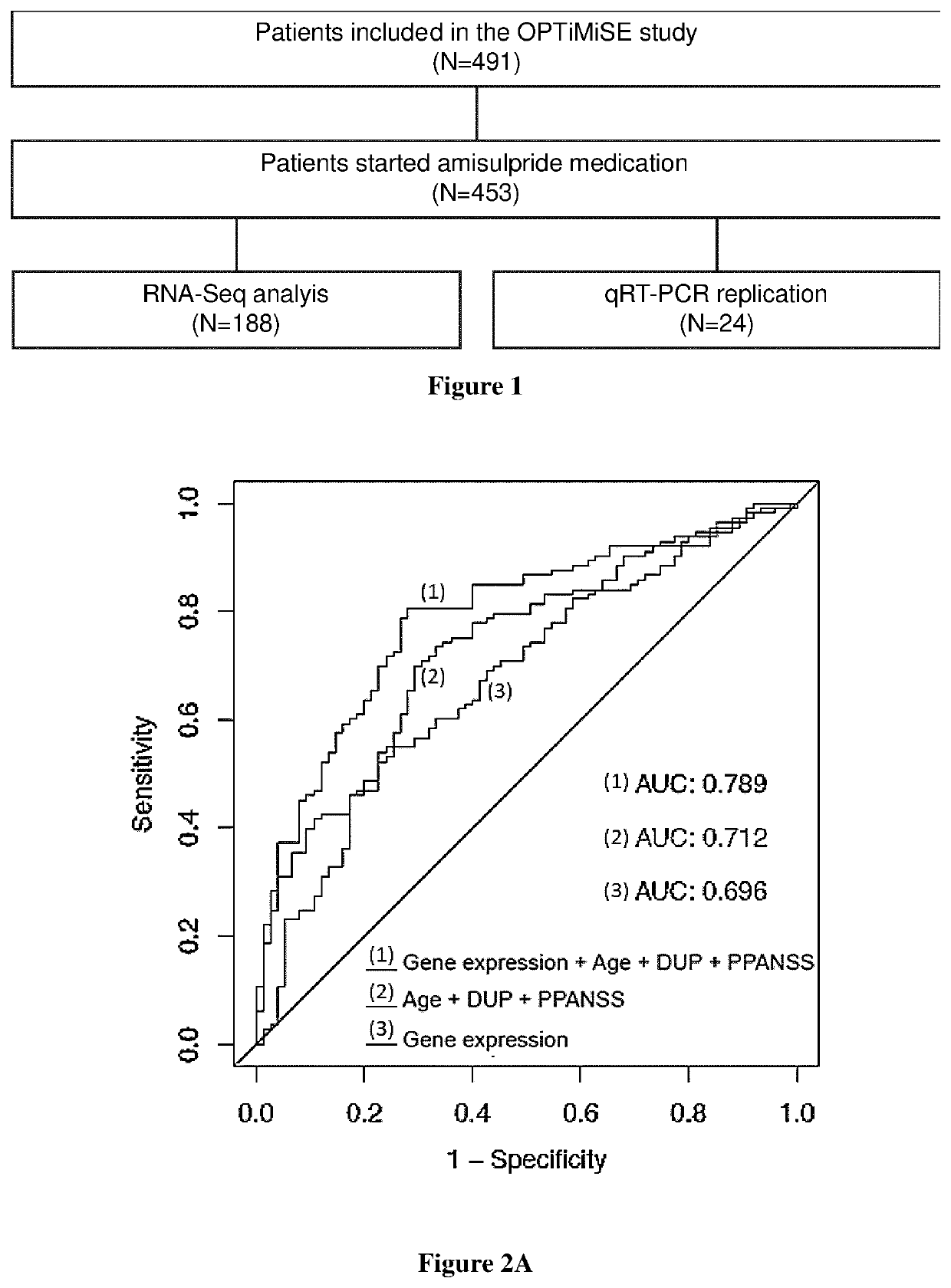Method for predicting the response of antipsychotic drugs
a technology of antipsychotic drugs and response methods, applied in the field of antipsychotic drug response prediction methods, can solve problems such as lack of valid prediction criteria, and achieve the effect of improving outcom
- Summary
- Abstract
- Description
- Claims
- Application Information
AI Technical Summary
Benefits of technology
Problems solved by technology
Method used
Image
Examples
Embodiment Construction
[0007]A first aspect of the invention relates to a method for predicting antipsychotic treatment response of a patient in need thereof, comprising: i) determining, in a sample obtained from the patient, the expression level of at least one genes selected in the group consisting in AC073172.1, AC092171.4, AC132872.1, ACSL5, AL133351.4, AL391832.3, ALG1L13P, ALPL, AP000640.1, C15orf54, CA4, CXCR6, CYSLTR2, DGAT2, DHRS13, FAT1, FBXL13,GALNT14, GUCY1B3, HOMER3, KAZN, KIAA0319, LINC00963, NFE4, NLRP12, NLRP6, P2RY12, P4HA2, PLB1, SLC4A4, TRPC6, and WLS; ii) comparing the expression of the genes determined at step i) with a reference values and iii) concluding that the patient will not respond to antipsychotic treatment when the expression level determined at step i) is significantly different from the reference value.
[0008]Indeed, the inventors identified 32 genes for which the expression changed after treatment in good responders only. They showed that the genes C15orf54, TRPC6, CXCR6, ...
PUM
| Property | Measurement | Unit |
|---|---|---|
| Fraction | aaaaa | aaaaa |
| Time | aaaaa | aaaaa |
| Therapeutic | aaaaa | aaaaa |
Abstract
Description
Claims
Application Information
 Login to View More
Login to View More - R&D
- Intellectual Property
- Life Sciences
- Materials
- Tech Scout
- Unparalleled Data Quality
- Higher Quality Content
- 60% Fewer Hallucinations
Browse by: Latest US Patents, China's latest patents, Technical Efficacy Thesaurus, Application Domain, Technology Topic, Popular Technical Reports.
© 2025 PatSnap. All rights reserved.Legal|Privacy policy|Modern Slavery Act Transparency Statement|Sitemap|About US| Contact US: help@patsnap.com


